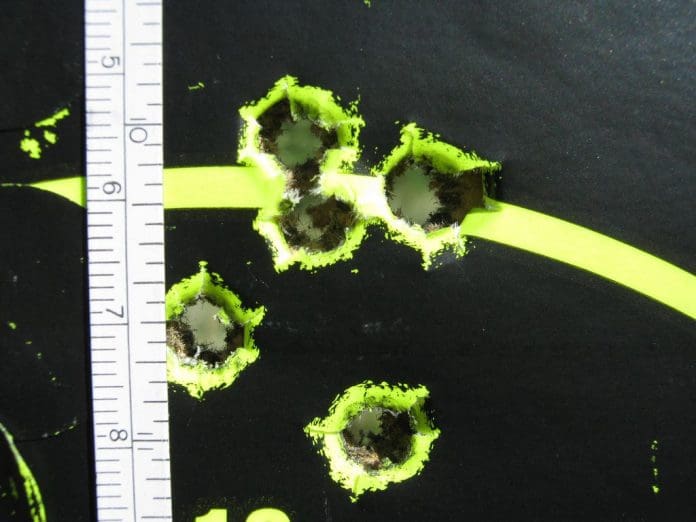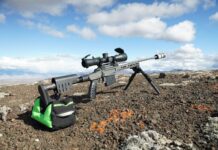Understanding Your Rifle’s Performance Through Standard Deviation
by Robby Denning
Ever had your rifle shoot a great group, say a three-shot, half-inch group, then brag to your buddy how great of a gun it is? Sure enough, he wants to see this instrument of surgical precision and comes along on your next trip to the range. Suddenly, that tiny group explodes to 1” or heaven forbid 1.5”! He’s sure you’ve been feeding him bull sandwiches and you vow to never bring him again.
So what really happened to that great group? Was it you? Well, that is a likely place to look but in 20 plus years of tuning hunting rifles, I’ve learned that it can be the gun; specifically the gun’s standard deviation (SD) is too high.
SD is a widely used measure of variability or diversity. It shows how much variation or dispersion exists from the average. A low SD indicates that the data points (in our case, bullet holes) tend to be very close to the average, whereas high SD indicates that the data points are spread out over a large range of values. SD can be calculated using a simple formula.
If a gun has a high SD, then it can shoot a tight group, but it can also shoot a big group. If I tune that gun and lower the SD, I can expect the groups to be closer in size to each other. In other words, there is less variability amongst groups.
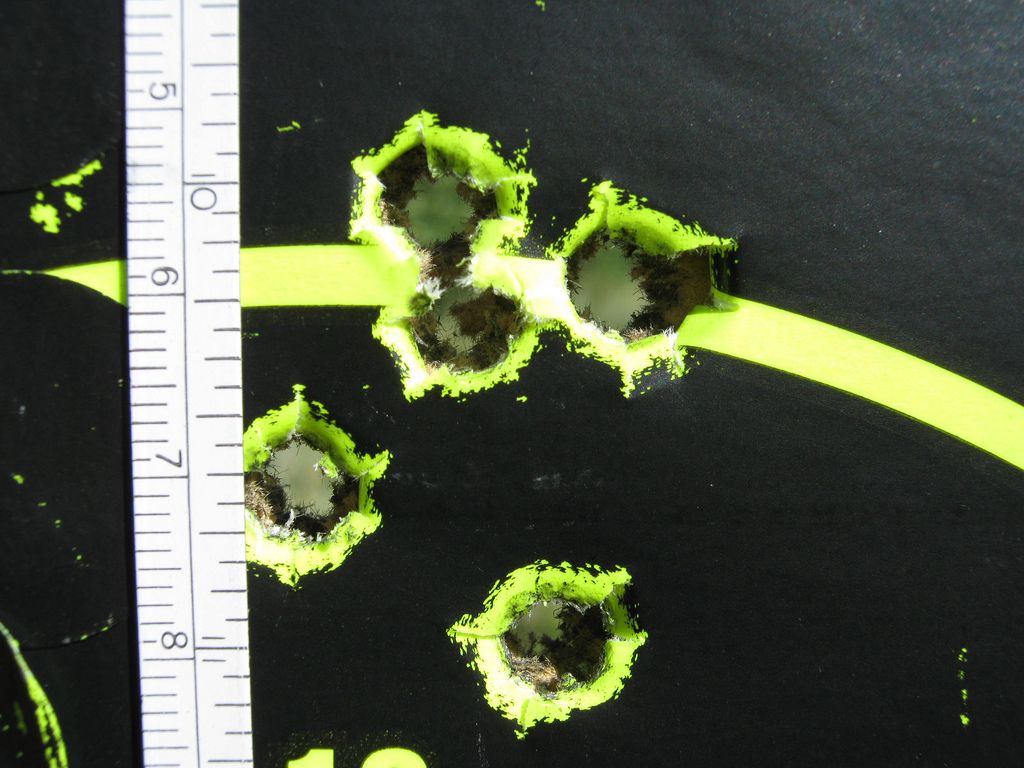
While I only shoot 3-shot groups when tuning a rifle, if your gun’s standard deviation is low, you can expect great 5-shot groups, too. The 1-inch group above was shot out of my Weatherby 7mm Rem Mag at 100 yards in less than 90 seconds.
While we’re probably too concerned with group size these days versus the ability to put a bullet in the boiler room, I must admit that I want my gun to shoot a three-shot, 1” or smaller group, and do it every time I pick it up. For that to happen, the gun must have a low SD.
A gun’s SD can be manipulated using a variety of tuning methods from cleaning it, bedding the action and barrel, ammunition manipulation, and dozens of other methods. For this article, I focus on what is usually the final step, selecting the load. I’ve discovered that understating SD—what I can expect my rifle to do over many groups—is a great way to know when to stop chasing a tight group.
In the early 2000’s, I bought a Weatherby Super Big Game Master in 7mm Remington Magnum caliber. The gun checked in at less than seven pounds naked, eight with my scope and mounts. For years, I’d packed around a 10-pound Sako AV. While that gun could shoot under 1”, even after I’d put 2000 rounds through it, it was just too heavy to hunt backcountry mule deer.
While Weatherby guarantees a 1.5” or less three-shot group, I want my guns to shoot 1” or less. The reason being is that if a gun shoots 1” at 100 yards, the group size grows 1” for every 100 yard increase, i.e. 2” at 200, 3” at 300, etc. Being that the vitals on a mule deer buck make about a 9” circle, I can expect my gun to hit within that circle, under ideal range conditions, out to 900 yards (which I will never shoot).
If I add in all the variables that affect the shot that you don’t see on TV, like fatigue, lack of practice, 25-mph high country gusty winds, shooting down a 70 degree slope, and 200” bucks that rarely venture into sunlight, I should cut that effective yardage in half, so about 450 yards. In 20 years of mule deer hunting, I’ve only had to shoot that far once. Therefore, if my gun can hold 1” at 100 yards, then I know that I’ve tuned the gun to surpass my ability to shoot it.
After a half-dozen trips to the range with my new Weatherby, I’d narrowed down the possible loads to three bullets (I left out the powder weights for simplicity): 150 grain Scirocco Bonded, a 145 grain Speer Boat Tail, and a 160 grain Speer Boat Tail.
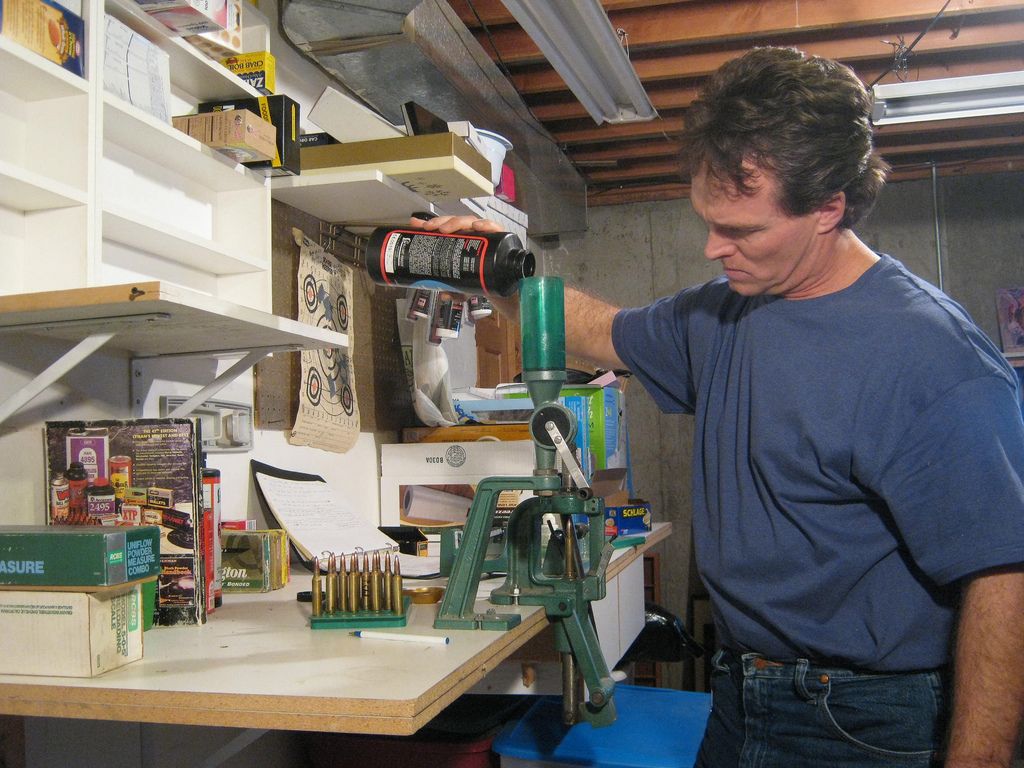
While factory ammo just keeps getting better, I still prefer reloading for best accuracy and cost savings.
All three bullets had grouped around 1”, sometimes more, sometimes less. Of the three bullets, I really wanted the bonded controlled expansion Scirocco, but I needed to pick the bullet that would perform the same every time I fired the gun. I then shot each load three times and noted the three-shot group size in my shooting journal. Applying SD, I found that the 160 grain Speer actually had the smallest group with the lowest SD and my quest was over.
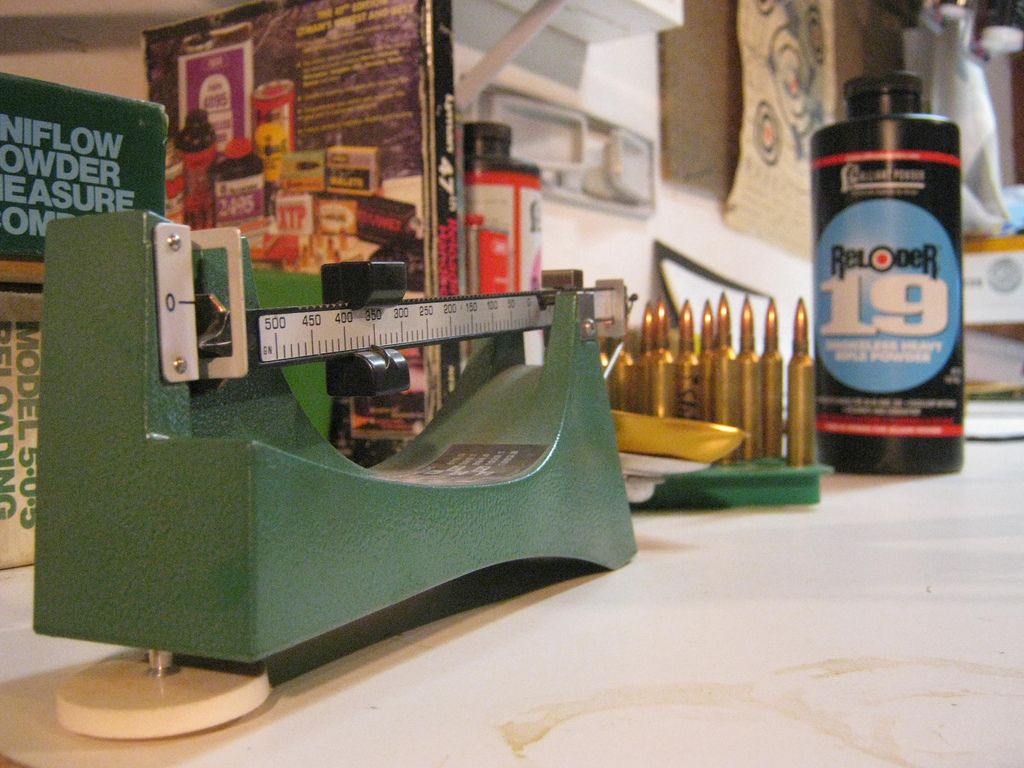
If you shoot more than a few hundred rounds per year, you might consider investing in reloading equipment. You’ll get your investment back in a few years and your accuracy will improve.
The numbers broke down this way:
Scirocco 150: 1.5” with SD of ± 0.62”
Speer 145: 1.1” with SD of ± 0.47”
Speer 160: 0.92” with SD of ± 0.41”
The Scirocco could produce some groups less than 1” as shown by the formula:
1.5” ± 0.62” = expected group sizes from 0.88” to 2.12”.
Without understanding the high SD of this load, if I were to get a 0.88” group, I would jump for joy! Then if the next group would blow up to 2.12”, I’d want to smash the rifle (you know the feeling!)
Now look at the Speer 160:
0.92” ± 0.41” = expected group sizes from 0.51” to 1.33”
The Speer 160 not only produces smaller groups but also a lower SD, with groups expected to stay between about 0.5” and 1.33”—good enough for this deer hunter!
This shows why understanding SD can help you decide on a load faster saving time, money, and frustration. You won’t be perplexed by the occasional small group; instead you’ll be able to look at the big picture of your rifle’s performance. By calculating the SD, I saw quickly that the Scirocco load had too high SD to count on. I don’t want to pick a load that might throw a 2.12” group which only grows at longer yardages than the 1” group does.
Ten years and nearly a thousand rounds later, I’m still shooting that same load. Every time I’ve been back to the range, the gun has performed within the SD expected.
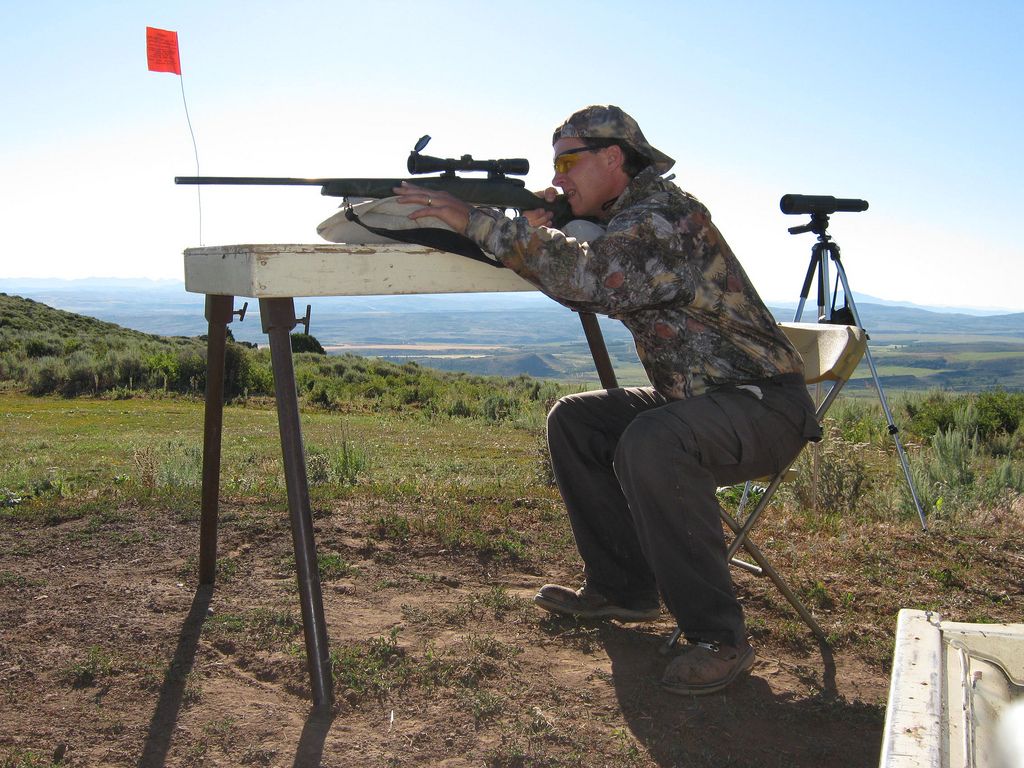
A good benchrest, wind flags, and a spotting scope are among the essentials when tuning a rifle.
If you want to use SD in choosing your next load, here are the steps:
1) Start a simple shooting journal where you can record group sizes for different
loads.
2) Decide on what bullet/powder combination (or factory ammo) that you want to
try. The more choices you have, the longer this process takes, but the more
likely you are to find a great load. Three to five loads are about right.
3) Shoot the loads narrowing down which ones group within a 0.5” of what you
want, i.e., if you’re after a 1” group, only keep the loads that shoot less than
1.5”
4) Once you have narrowed it down to around three loads, you now need to
shoot those loads for a total of (3) three-shot groups.
5) Note in your shooting journal the size of each group for each load.
6) Apply the SD formula below then pick the load with the smallest group size
and lowest SD.
7) If you find several are so close that it’s hard to choose, then choose either the
highest velocity, desired bullet construction, or ballistic coefficient that suites
you.
Here is the six step SD formula:
1) Add together each load’s three group sizes and divide by three to get average
group size;
a. Example: 1.25” +1.10” +0.75” = 3.1 divided by 3 = 1.03”
2) Subtract this average from each group value to get each groups deviation
from average
a. Example:
i. 1.25” – 1.03” = 0.22”
ii. 1.1” – 1.03” = 0.07”
iii. 0.75” – 1.03” = -0.28” (negative numbers are OK)
3) Square the deviations
a. Example:
i. = 0.0484 = 0.05
ii. = 0.0049 = 0.01
iii. = 0.0784 = 0.08
4) Add the squared values together
a. 0.05 + 0.01 + 0.08 = 0.14
5) Divide this sum of values by the number of groups (three in our case)
a. 0.14 divided by 3 = 0.046 = 0.05
6) Take the square root of this value to get SD
a. = 0.22”
*Note: shot groups are measured to the second decimal place, so all numbers were rounded to second decimal place as in step 1, 3, 5.
The SD formula shows that this load has a standard deviation of 0.22”, less than a quarter inch!
Combining this with the average group size of 1.03”, we get a final value for this load:
1.03 ± 0.22” (write that down with your load information)
In laymen terms, that means this gun/load combination is expected to produce a 1.03” group with ± 0.22” deviation from that group expected. If I do my job at the bench, my groups will vary between 0.81” and 1.25”. That’s enough accuracy to kill a buck out to 500 yards and beyond.
If you want to know when you’ve hit the right load for your gun, give SD a try. I can promise it will at least save you a few cuss words when choosing a load for your rifle.
If you have any questions, you can send me a private message at Rokslide.














